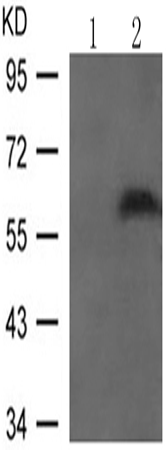|
Background: |
The protein encoded by this gene belongs to the SMAD, a family of proteins similar to the gene products of the Drosophila gene 'mothers against decapentaplegic' (Mad) and the C. elegans gene Sma. SMAD proteins are signal transducers and transcriptional modulators that mediate multiple signaling pathways. This protein mediates the signals of the bone morphogenetic proteins (BMPs), which are involved in a range of biological activities including cell growth, apoptosis, morphogenesis, development and immune responses. In response to BMP ligands, this protein can be phosphorylated and activated by the BMP receptor kinase. The phosphorylated form of this protein forms a complex with SMAD4, which is important for its function in the transcription regulation. This protein is a target for SMAD-specific E3 ubiquitin ligases, such as SMURF1 and SMURF2, and undergoes ubiquitination and proteasome-mediated degradation. Alternatively spliced transcript variants encoding the same protein have been observed. |
|
Applications: |
WB |
|
Name of antibody: |
SMAD1 (Phospho-Ser206) |
|
Immunogen: |
Synthetic peptide of human SMAD1 (Phospho-Ser206) |
|
Full name: |
SMAD family member 1 (Phospho-Ser206) |
|
Synonyms: |
BSP1; JV41; BSP-1; JV4-1; MADH1; MADR1 |
|
SwissProt: |
Q15797 |
|
WB Predicted band size: |
52 kDa |
|
WB Positive control: |
Hela cells treated with PMA |
|
WB Recommended dilution: |
500-1000 |

 購物車
購物車 幫助
幫助
 021-54845833/15800441009
021-54845833/15800441009
